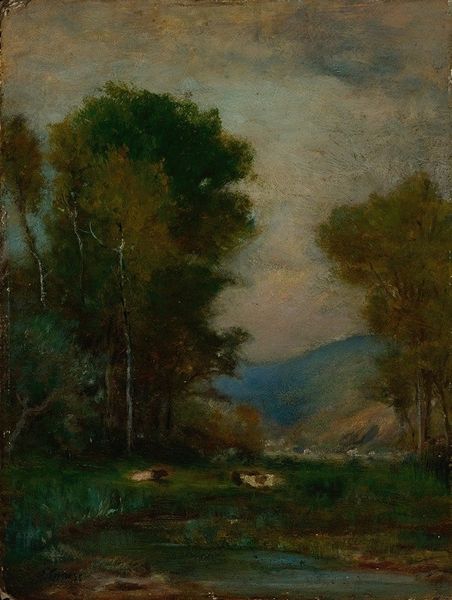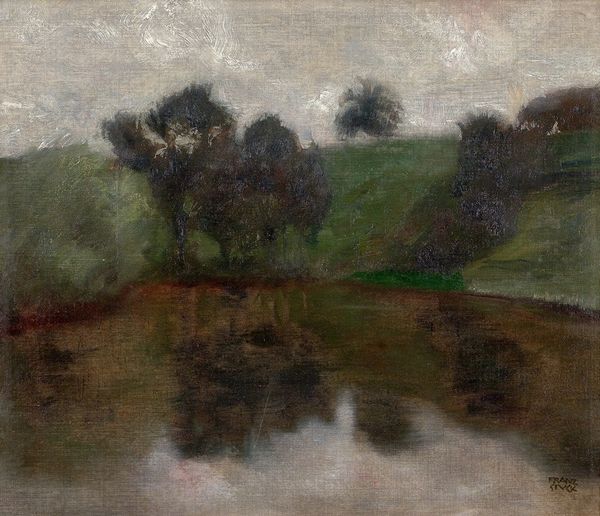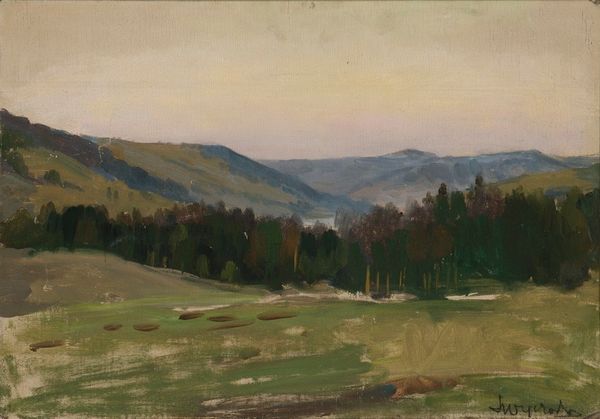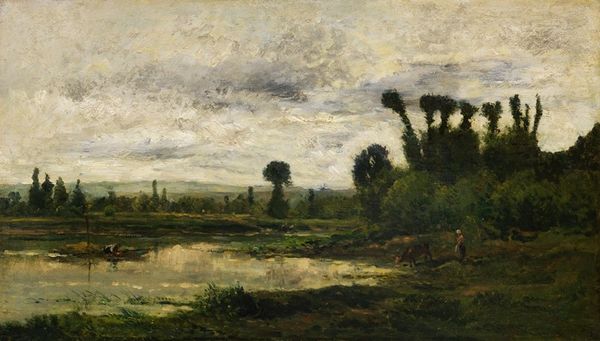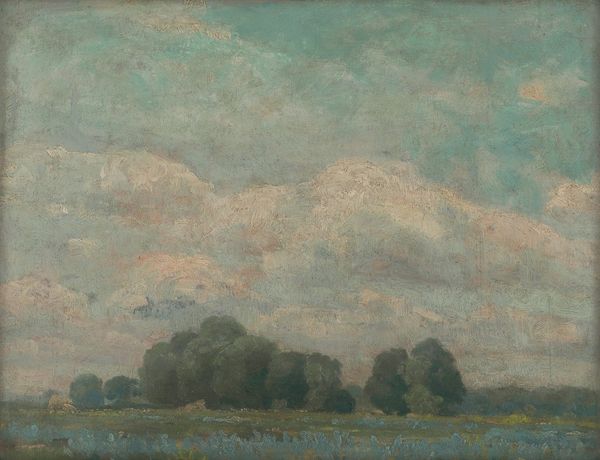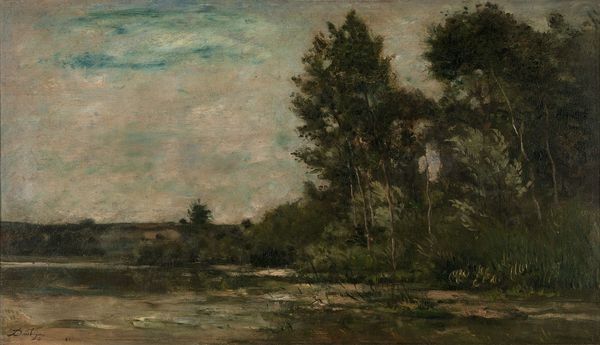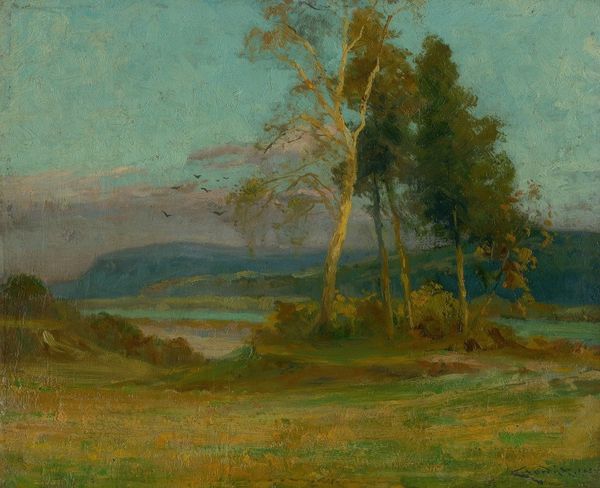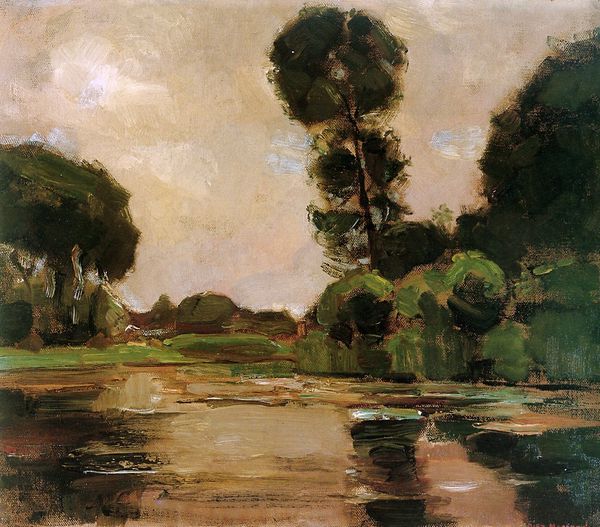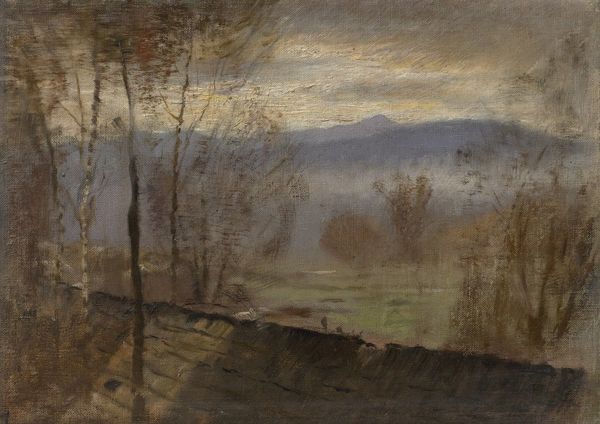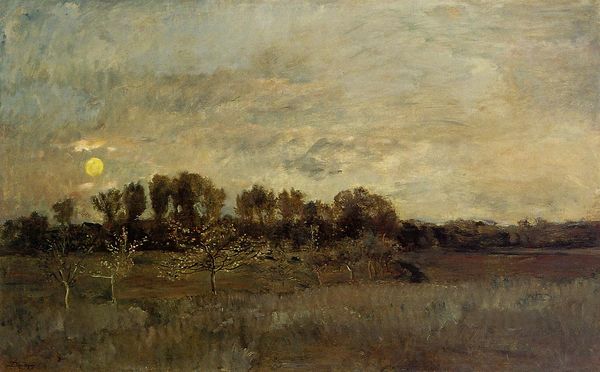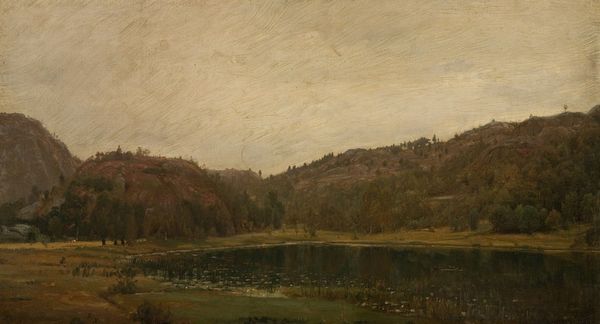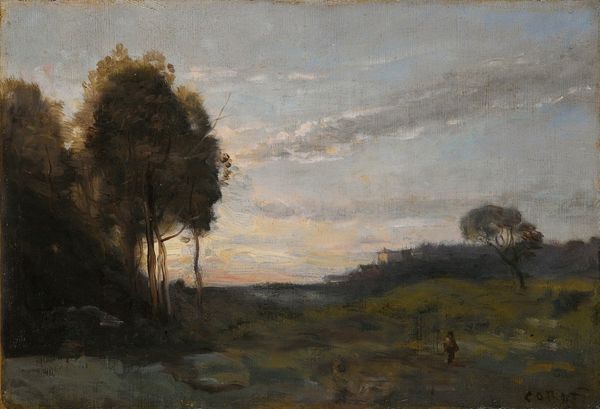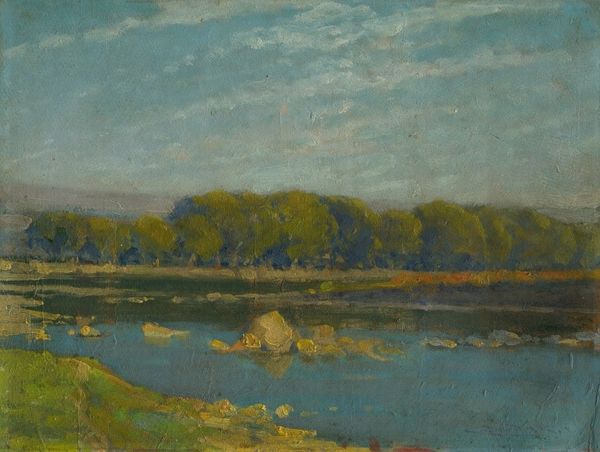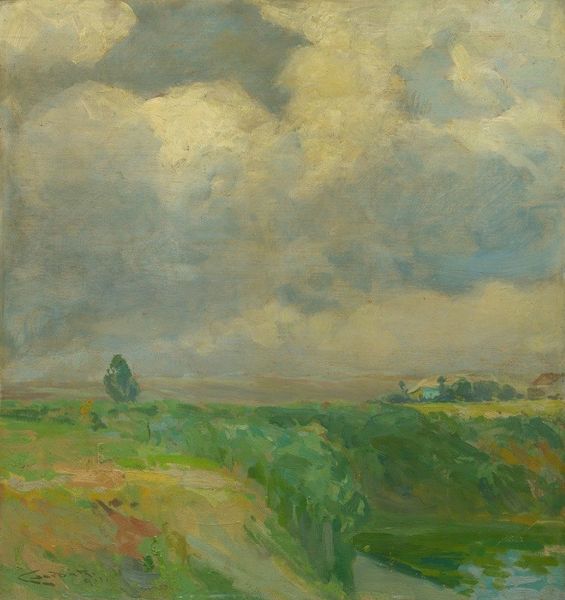
Copyright: Public Domain: Artvee
Editor: We're looking at Jean-Jacques Henner's "Paysage d’Alsace, crépuscule," painted between 1879 and 1888 using oil paint. The mood feels so heavy, almost oppressive, with those dark, looming colors. What do you see in this piece? Curator: I see more than just a landscape; I see a representation of Alsace, a region caught in the crosshairs of French and German identity. Henner, an Alsatian himself, painted this during a period of intense political tension following the Franco-Prussian War. The somber tones, the muted light – are they not reflecting the collective anxieties and displacement experienced by Alsatians forced to navigate shifting national allegiances? Editor: That's fascinating. I hadn't considered the political context at all, I just saw the dark greens and browns. Do you think the "crépuscule"—the twilight—is symbolic too? Curator: Absolutely. Twilight is a liminal space, a time of ambiguity, belonging neither to day nor night. This mirrors the liminal national identity of the Alsatians at the time. Consider how the impressionistic brushstrokes further obscure clarity, contributing to the feeling of uncertainty. Does this reading change how you view the artwork? Editor: Definitely. It's not just a pretty landscape anymore; it's a visual representation of a people's struggle. The artist is actively making a statement. Curator: Precisely! It reminds us that even seemingly benign landscape paintings can be deeply political, reflecting the artist's and their community’s experiences within a specific historical and social context. We can bring these old works back to life and connect them to struggles of today. Editor: I will never look at a landscape the same way again. Thanks for your fresh perspective!
Comments
No comments
Be the first to comment and join the conversation on the ultimate creative platform.
